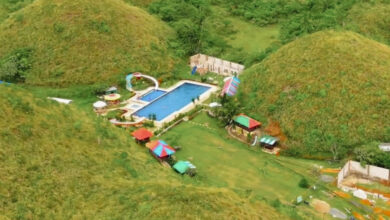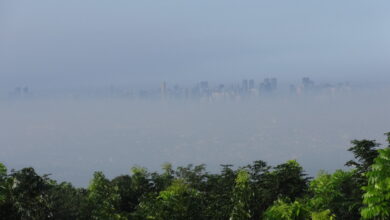
Beyond Dolomite: Metro Manila’s Masterplan
Who would’ve thought that a pile of sand could shore up quite the controversy?
It’s a case of wrong timing, conflicting reports, and personalities saying things that they shouldn’t have. But in order to realize the vision of a rehabilitated Manila Bay, we need to go beyond dolomite. A pretty shore does not solve the problem of Manila Bay. It’ll take a combination of a lot of efforts – that white sand is just a fraction of the bigger picture.
For context: A fresh batch of dolomite was again dumped along the coast of Manila Bay this month. It renewed the controversy around the project, and sent Filipino internet into a familiar furor. The consensus seems to be that it’s a waste of money. Instead of spending it on artificial white sand, they should’ve just spent it on COVID-19 relief efforts. But that is only one answer to the wrong question.
The issue of dolomite needs to be resolved. What the public needs to know is that on the surface, it’s painted as an unnecessary expense, when in fact it actually contributes meaningfully to the rehabilitation of Manila Bay. Many fail to see that the sand is just a small part of the grand plan. We are bombarded with the flares of the controversy, hence we fail to see the bigger picture.
A necessary change in behavior
The Department of Environment and Natural Resources (DENR) maintain that the use of dolomite “is a significant component” of the Manila Bay rehabilitation. Contrary to facts presented by some critics, the DENR says that dolomite is not detrimental to the ecosystem, does not pose any health risk to the public, and will not immediately be washed away during typhoons.
While the topic has definitely been polarizing, as there are both critics and supporters of the initiative, there is one undeniable (and rarely talked about) benefit of this project: The DENR’s claim that the white sand will hopefully promote a “pro-environment” behavior among Filipinos. That when they see the pristine shore, they would be inspired “to be more mindful of their obligation to help keep the Manila Bay clean” – now certainly, who would go against that?
However, we must not lose sight of the end goal. Beautification is only one part. Going beyond dolomite means acknowledging that the rehabilitation is a massive undertaking. One that requires cooperation and coordination between the public and private sectors.
A concerted government effort
It started with what DENR Secretary Roy A. Cimatu calls the “Battle for Manila Bay”, back in 2019. They accomplished much, bannered by reducing coliform levels. They also installed solar-powered sewage plants. And we haven’t seen the last of closing down establishments violating the Clean Water Act.
However, the problem with Manila Bay is not just the bay’s immediate area, but the different tributaries that empty into it. Cleaning up the bay means ensuring that all these other waterways are also given ample attention. And this is exactly what has been happening, even during the pandemic.
There are a lot of continuous efforts from the DENR in terms of cleaning up of esteros, like the Estero dela Reina, which is one of the tributaries of Pasig River. Clean up the esteros, and you’re cleaning up Manila Bay as well.
In addition, there are other efforts, like the dredging and widening of the Marikina River and the rehabilitation of the Las Piñas-Zapote River. It’s all connected, and improvement in one lane means eventual improvement to others.
An infusion from the private sector
On top of government efforts, the private sector is also doing its part. The biggest, perhaps, is the involvement of San Miguel Corporation (SMC) in the cleanup of Pasig River. SMC is no stranger to efforts like these. In fact, they already are conducting a ₱1-billion corporate social responsibility project to clean the Tullahan-Tinajeros River. They also cleaned numerous waterways during the Skyway 3 project.
It’s a major effort, and involves coordination between SMC, the DENR, and the Department of Public Works and Highways (DPWH). This infusion from the private sector is a huge help in the overall plan for improving Manila Bay, as all of these definitely add up.
Another example of this infusion are the different reclamation projects around Metro Manila and Manila Bay. Efforts like Horizon Manila and the SM Prime Pasay Reclamation Project show a vision of development that hinges on ensuring that the waters around it are kept clean. The plan is that these private entities will team up with the DENR and DPWH to ensure that economic development and environmental stewardship go hand-in-hand.
READ: [The Pasig River: A Short History and a Timely Renaissance]
A source of pride for every Filipino
All of these efforts contribute to a healthy and more beautiful Greater Manila Area. These efforts add up to the “true” masterplan for Manila Bay – the government and private sector coming together to build not just a better Manila Bay, but a better National Capital Region as well.
It’s a monumental effort, but far from impossible if we work together. The dream is to rehabilitate not just Manila Bay, but all other rivers, lakes, and esteros. And let the rest of the country follow suit. Quite a dream, isn’t it?
The objective is similar to the story of London’s Thames River. It was a literal cesspool, and was officially declared dead in 1957. However, it was restored and is again teeming with wildlife. They’re dealing with a different set of problems (i.e. plastic pollution), but it is now a source of pride for Londoners.
Let’s go beyond dolomite and see it for what it really is. At the end of the day, that’s what we want for Manila Bay – for it to be a source of pride not just for Manilenyos, but for all Filipinos.




